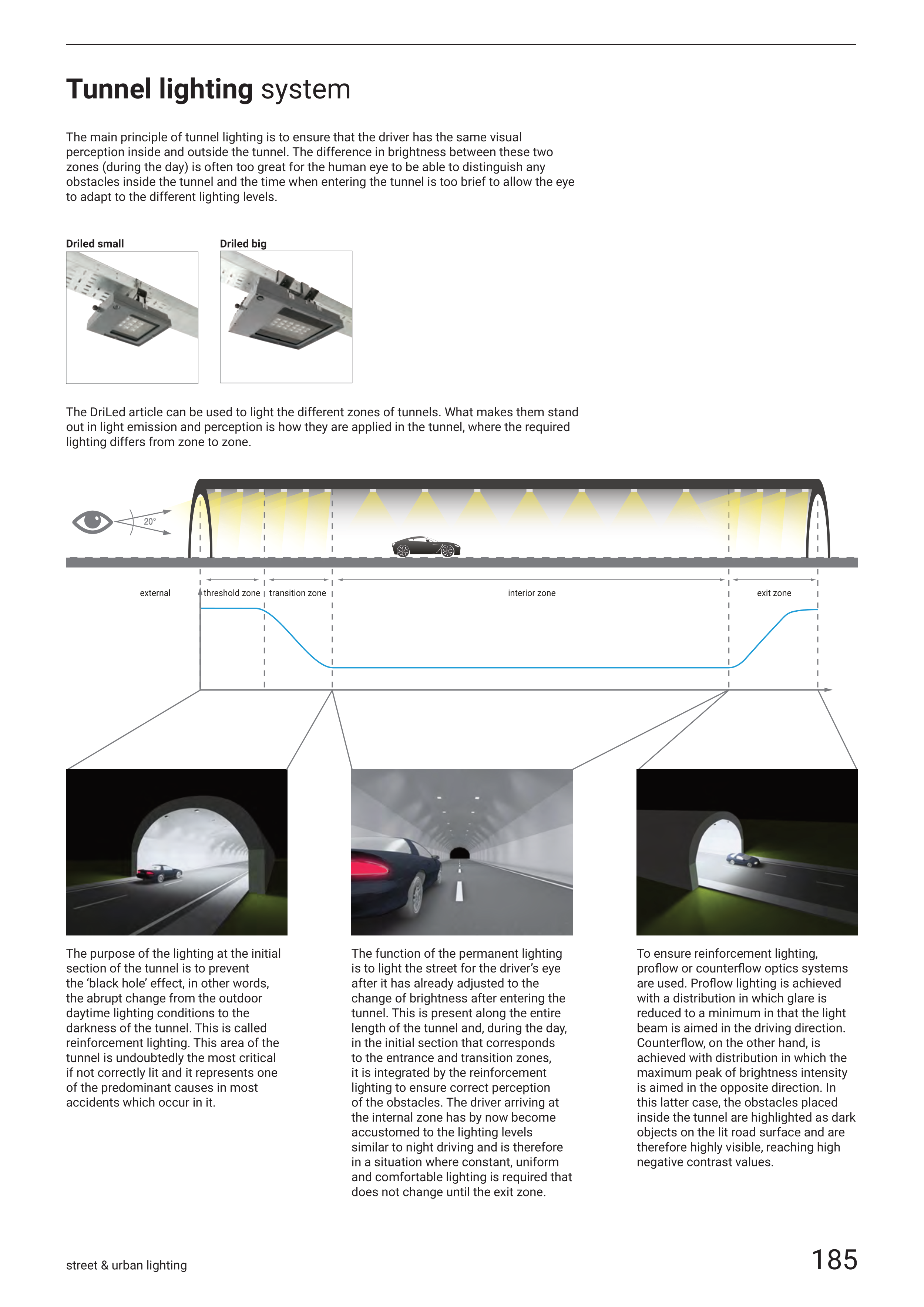185
street & urban lighting
Tunnel lighting system
threshold zone
20°
external
transition zone
interior zone
exit zone
Driled small
Driled big
The purpose of the lighting at the initial
section of the tunnel is to prevent
the ‘black hole’ effect, in other words,
the abrupt change from the outdoor
daytime lighting conditions to the
darkness of the tunnel. This is called
reinforcement lighting. This area of the
tunnel is undoubtedly the most critical
if not correctly lit and it represents one
of the predominant causes in most
accidents which occur in it.
The function of the permanent lighting
is to light the street for the driver’s eye
after it has already adjusted to the
change of brightness after entering the
tunnel. This is present along the entire
length of the tunnel and, during the day,
in the initial section that corresponds
to the entrance and transition zones,
it is integrated by the reinforcement
lighting to ensure correct perception
of the obstacles. The driver arriving at
the internal zone has by now become
accustomed to the lighting levels
similar to night driving and is therefore
in a situation where constant, uniform
and comfortable lighting is required that
does not change until the exit zone.
To ensure reinforcement lighting,
proflow or counterflow optics systems
are used. Proflow lighting is achieved
with a distribution in which glare is
reduced to a minimum in that the light
beam is aimed in the driving direction.
Counterflow, on the other hand, is
achieved with distribution in which the
maximum peak of brightness intensity
is aimed in the opposite direction. In
this latter case, the obstacles placed
inside the tunnel are highlighted as dark
objects on the lit road surface and are
therefore highly visible, reaching high
negative contrast values.
The main principle of tunnel lighting is to ensure that the driver has the same visual
perception inside and outside the tunnel. The difference in brightness between these two
zones (during the day) is often too great for the human eye to be able to distinguish any
obstacles inside the tunnel and the time when entering the tunnel is too brief to allow the eye
to adapt to the different lighting levels.
The DriLed article can be used to light the different zones of tunnels. What makes them stand
out in light emission and perception is how they are applied in the tunnel, where the required
lighting differs from zone to zone.


